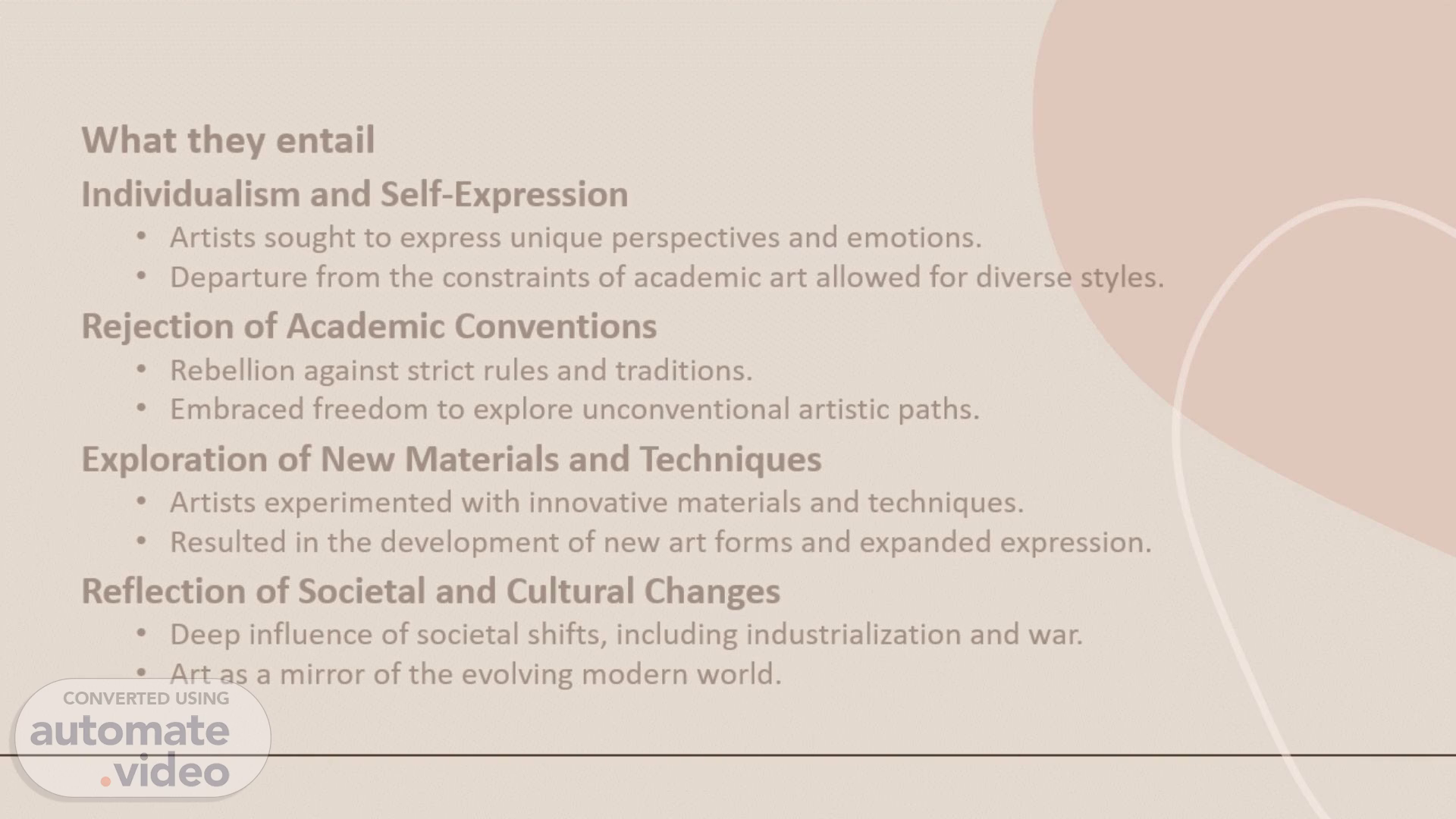
Page 1 (0s)
[Audio] Welcome to our exploration of Modern Art. In this first slide, we'll introduce the key characteristics that define this artistic movement. Modern art emerged in the late 19th century and continued into the mid-20th century, marking a significant departure from traditional artistic styles. As we delve into the characteristics, you'll notice a strong emphasis on individualism and self-expression. Modern artists sought to break free from the constraints of academic traditions, allowing for a rich diversity of styles. This rebellion against academic conventions also led to the exploration of new materials and techniques, bringing about a wave of innovation in the art world. Moreover, modern art served as a mirror to the profound societal and cultural changes of the time. Artists became not just creators but interpreters of the evolving modern world..
Page 2 (58s)
[Audio] Now, let's journey through the diverse styles and movements that shaped Modern Art. Four major movements stand out: Impressionism, Cubism, Surrealism, and Abstract Expressionism. Impressionism, exemplified by artists like Claude Monet, aimed to capture the immediate impression of a scene, using loose brushstrokes and a focus on light and color. In contrast, Cubism, pioneered by Pablo Picasso, involved the fragmentation and ion of forms into geometric shapes, as seen in his groundbreaking work 'Les Demoiselles d'Avignon. Surrealism, led by Salvador Dalí, took us into the realm of the unconscious mind, creating dreamlike imagery. Dalí's 'The Persistence of Memory' is a famous example. Finally, Abstract Expressionism, with artists like Jackson Pollock, embraced spontaneous, gestural painting. His masterpiece 'No. 5, 1948' is a powerful representation of this movement..
Page 3 (2m 8s)
[Audio] As we move to the third slide, we'll explore the lasting legacy and impact of Modern Art. Its influence is evident in the continuation of experimental approaches in contemporary art. Artists today are still pushing boundaries, experimenting with new media, and creating immersive experiences. The cultural impact is profound, challenging traditional notions of beauty and aesthetics, encouraging a broader and more inclusive understanding of art. In conclusion, Modern Art remains a dynamic and influential force. Its legacy persists, inspiring new generations of artists and reshaping the landscape of art as we know it..
Page 4 (2m 52s)
[Audio] As we conclude our journey through Modern Art, let's recap the key takeaways. This artistic movement, characterized by individualism, rejection of conventions, and exploration, continues to inspire and shape the art world. Modern art's impact is ongoing, seen in the experimental approaches and the exploration of new media by contemporary artists. Its cultural influence extends into challenging traditional notions of beauty, fostering a more inclusive understanding of art. Thank you for joining us on this exploration of Modern Art. Feel free to share your thoughts or ask questions as we appreciate the dynamic and enduring legacy of this influential movement..